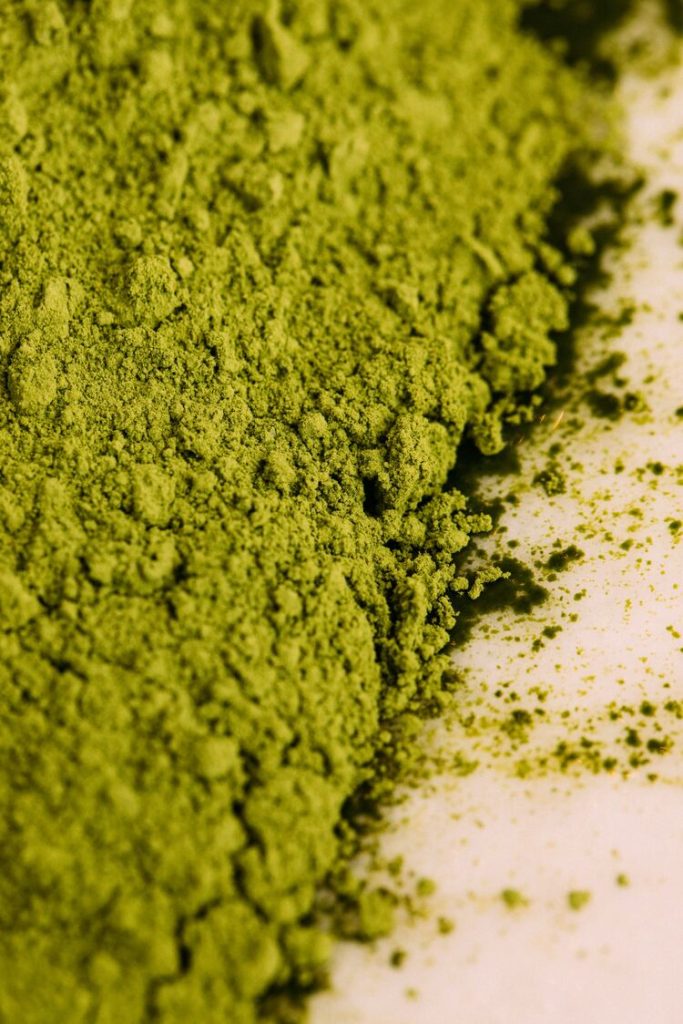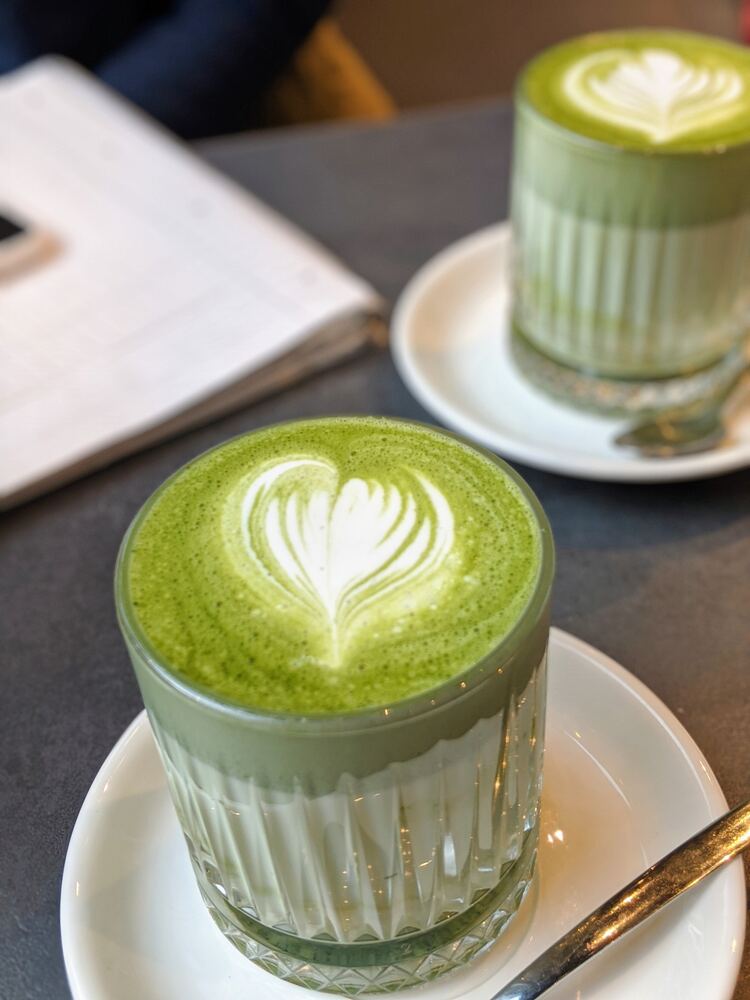What does matcha latte taste like?
At its core, a matcha latte is made of finely ground green tea powder mixed with steamed milk or a milk substitute, creating a smooth and creamy concoction. The taste of a matcha latte can be described as having a delicate balance of sweetness, creaminess, and a hint of bitterness. The beautifully unique earthy and umami flavors of the matcha blend seamlessly with the creaminess of the milk, making it a refreshing and enjoyable drink for those who appreciate a more nuanced taste.
It’s essential to mention that the taste of your matcha latte can vary depending on the quality of the matcha powder used and your choice of milk or milk substitute. Higher-quality matcha powder will yield a smoother, more vibrant flavor while lesser grades may be slightly more bitter. Similarly, different milk choices can affect the overall creaminess and sweetness of your drink.
Matcha lattes have gained immense popularity over the past few years, and at coffee shops and cafes worldwide, this green beverage has become a delightful alternative to a traditional latte. Keep reading to learn more about this drink!
Please note: This article contains affiliate links, meaning I may earn a commission if you make a purchase by clicking a link. Of course, this comes at no extra cost to you and helps me to keep offering solid information to readers.

What Is Matcha Latte?
In this section, we will explore the matcha latte and its wonderful taste profile, as well as provide some context on its origins and ingredients. To understand the flavor of a matcha latte, it’s essential to break down its main components.
Matcha: A Brief Background
Matcha is a finely ground powder made from specially grown and processed green tea leaves. Originating in Japan, it has been used for centuries in traditional tea ceremonies and has recently gained popularity as an ingredient in various food and drink recipes.
High-quality matcha is prized for its rich, vegetal flavor, and slight bitterness. It has a distinct, almost grassy note that sets it apart from other types of green tea. Its vibrant green color comes from high levels of chlorophyll and antioxidants, making it not only delicious but also nutritious.
Learn more about the different types of matcha in our dedicated article.
Latte Explained
A latte, on the other hand, is an espresso-based drink made by combining steamed milk and a shot of espresso. Lattes are known for their creamy texture and relatively mild coffee flavor, which allows them to be easily adapted and flavored with various ingredients like syrups, spices, or, in this case, matcha.
When combining matcha, and milk, the result is a delicate balance of creaminess and earthiness. The steamed milk also helps to soften the overall taste, making it smoother and more palatable for those who might not enjoy the intensity of traditional matcha tea.
One important thing to keep in mind is that some matcha latte recipes include espresso or coffee. In this article, we are discussing matcha lattes from a purely tea latte perspective (but we will discuss how to incorporate it in a recipe if you want).
With this understanding of the main drink’s ingredients and their characteristics, we can now appreciate the particular taste of a matcha latte and how it differs from other tea and coffee beverages.
What Does Matcha Latte Taste Like?
Some people may wonder what does a matcha latte tastes like. As lovers of this delicious beverage, we want to take you on a journey through its flavors and textures.
Texture and Consistency
A matcha latte has a smooth and velvety texture that is a delight to the palate. When prepared correctly, it perfectly balances the consistency of the matcha tea powder and milk or milk alternatives such as almond, soy, or oat milk.
Whether you are sipping on a hot matcha latte or enjoying one over ice, the consistency remains creamy and smooth, ensuring that every sip is a delight.
Initial Flavor
When you first taste a matcha latte, you’ll notice the distinct grassy and earthy notes of the matcha tea powder. This mellows out with the creaminess of the milk or milk alternative, creating a harmonious taste that is both comforting and invigorating.
Those who are fans of green tea will appreciate the more complex flavor profile that matcha offers. While it relates to green tea, matcha has a fuller, more vivid taste.
Aftertaste
After taking a sip of a matcha latte, you’ll find that the earthy and grassy flavors linger on your tongue in a pleasant, soothing aftertaste that is mildly sweet. The creaminess of the milk enhances this aftertaste and rounds out the experience, leaving you wanting more.

Factors Affecting a Matcha Latte Taste
In this section, we will discuss the factors that influence the taste of a matcha latte. Keep reading as we delve into the quality of matcha, milk type, and sweeteners.
Quality of Matcha
First and foremost, the quality of the matcha powder has a significant impact on the taste of your matcha latte. Higher-grade matcha generally has a smoother, less bitter taste and a vibrant green color.
Lower-grade matcha, on the other hand, can taste more bitter or even gritty and may have a duller green hue. To experience the best matcha latte, we recommend choosing a ceremonial-grade matcha or a high-quality culinary-grade matcha.
Milk Type
The type of milk used in a matcha latte also plays a crucial role in determining its taste. Dairy milk, for example, has a creamy and sweet taste that complements matcha exceptionally well.
On the other hand, plant-based milk alternatives, such as almond, soy, or oat milk, have distinct flavors that contribute to the overall taste of a matcha latte.
Below is a brief comparison of different milk types and their impact on matcha latte flavor:
- Dairy milk – Creamy and sweet, goes well with matcha
- Almond milk – Nutty and slightly sweet, adds a unique twist to a matcha latte
- Soy Milk – Earthy and subtly sweet, blends well with matcha
- Oat Milk – Creamy and slightly nutty, enhances the matcha experience
Sweeteners
While matcha can have a slightly bitter taste, adding a sweetener can help balance the flavor profile. The type and amount of sweetener can greatly influence the matcha latte experience. Some sweetener options include regular sugar, honey, maple syrup, or low-calorie alternatives like stevia.
It is essential to find the right balance of sweetness, as too much sweetener may overpower the delicate matcha flavor, while too little might not cut through the bitterness. Experimenting with different sweeteners and adjusting to personal preferences can produce the perfect matcha latte.
How to Prepare a Matcha Latte at Home
Here’s a step-by-step guide on how to make a matcha latte:
Ingredients
- 1 teaspoon matcha powder
- 2 teaspoons hot water (not boiling)
- 1 cup milk (dairy or non-dairy like almond, soy, or oat)
- 1 shot of espresso or 1 or 2 ounces of strong coffee (optional)
- 1-2 teaspoons sweetener (optional, like honey, maple syrup, agave syrup, or sugar)
- A pinch of vanilla extract (optional)
Instructions
- Prepare the Matcha Paste:
- Sift the matcha powder in a bowl to remove lumps and ensure a smooth texture.
- Add the hot (not boiling) water to the bowl with the matcha powder.
- Use a bamboo whisk or a small whisk to vigorously whisk the matcha and water together until it forms a smooth paste. This step helps to avoid clumps in your latte.
- Heat the Milk:
- Heat the milk over medium heat in a small saucepan until it’s hot but not boiling.
- You can also heat the milk in the microwave for about 1-2 minutes.
- If using non-dairy milk, make sure to choose one that froths well.
- Froth the Milk (Optional):
- If you have a milk frother, you can froth the heated milk until it’s creamy and has a nice foam on top.
- If you don’t have a frother, you can whisk the milk vigorously with a regular whisk.
- You can skip this step, but frothing the milk adds a wonderful texture to the latte.
- Combine Matcha and Milk:
- Pour the matcha paste into a cup.
- If you’re using espresso or coffee, add it to the matcha paste and stir.
- If you’re using sweetener, add it to the matcha paste and stir to dissolve.
- If you’re using vanilla extract, add a small pinch to the matcha paste and stir.
- Slowly pour the heated milk into the cup, holding back the foam with a spoon to allow the liquid to pour first.
- Finish and Serve:
- Gently stir the matcha paste and milk together until well combined.
- If you frothed the milk, spoon the milk foam on top of the latte.
- Your matcha latte is ready to be enjoyed!
You can adjust the matcha powder and sweetener quantities to your taste preferences. Some people prefer a stronger matcha flavor, while others prefer it milder. Feel free to experiment and find the perfect balance for you.
If you prefer a cold matcha latte, simply add ice to the glass before pouring the frothy matcha and milk mixture over it.

Comparing Matcha Lattes to Other Popular Lattes
When it comes to flavor, matcha lattes have a unique taste that sets them apart from other popular lattes. In this section, we’ll compare matcha latte to some of the other well-loved lattes out there.
First, let’s discuss the classic caffe latte. A caffe latte is prepared by blending espresso with steamed milk and a small layer of milk foam on top. The taste of a caffe latte is characterized by a combination of bold, roasted coffee flavor and creamy milk. On the other hand, a matcha latte has a more earthy, grassy taste with subtle sweetness coming from the steamed milk. The profile is milder and less intense than that of a caffe latte.
Next up is the chai latte. Chai lattes are made with spiced black tea, steamed milk, and sweeteners. The flavor of a chai latte is dominated by warm spices such as cinnamon, cardamom, and cloves, while the matcha latte has a completely different flavor profile. The grassy, vegetal notes of the matcha contrast with the bold spiciness of chai, and the two drinks offer unique sensory experiences.
Finally, let’s look at the popular pumpkin spice latte. This seasonal favorite typically includes a blend of espresso, steamed milk, and pumpkin-flavored syrup, topped with whipped cream and a sprinkle of pumpkin pie spices. The taste is a rich, sweet combination of pumpkin, cinnamon, nutmeg, and clove. In comparison, the matcha latte’s flavor is noticeably less sweet and its earthy, green tea notes provide a simpler, more straightforward taste.
Top Matcha Recommendations
If you want to give this drink a go, here are our top recommendations when it comes to matcha powders:
Organic Matcha Green Tea Powder

Jade Leaf Organic Matcha Green Tea Powder


MATCHA DNA Certified Organic Matcha Green Tea Powder


In our exploration of matcha latte’s taste, we have discovered that its distinct flavor is a delightful combination of the earthy taste of matcha and its aroma. The added milk or milk substitute provides a creamy, smooth texture and complements the matcha perfectly.
We hope this article has provided insight and intrigue into the world of matcha lattes. Until next time, keep on sipping!
To you, what does matcha latte taste like?
More About Matcha
What Does Blue Matcha Taste Like?
More About Green Tea
What Does Green Tea Taste Like?